
Optavia on your own refers to independently following the Optimal Weight 5 and 1 plan for weight loss without purchasing Optavia Fuelings, joining Optavia Premier, or receiving coaching support. This approach involves consuming store-bought Optavia Fuelings, creating DIY Optavia Fuelings from scratch, and preparing lean and green meals independently, without relying on Optavia foods as meal replacements.
Doing Optavia on your own doesn’t mean eating what you want, when you want, and how much you want, but it does entail following the 5&1 Plan rules, which include consuming 5 Optavia Fuelings and having 1 Lean and Green meal per day. If you’re new to Optavia, I recommend beginning by researching Optavia’s 5&1 Plan and exploring Optavia Fueling alternatives. If you have dietary restrictions, it’s advisable to consult a healthcare provider first to ensure that pursuing Optavia independently is appropriate for your needs.
One of the reasons I created my diet plan that is similar to Optavia was to shave off expenses and save money. Following the Optavia plan has been wonderful, but I just cannot justify paying over $500 per month for processed food. (Not for now anyway.) To do Optavia on your own, follow these 11 steps.
- Use shakes similar to Optavia
- Create DIY Optavia Fuelings
- Find cheaper alternatives to Optavia Fuelings
- Use Optavia bar substitutes
- Make your own Optavia bars
- Eat 5 small meals a day
- Forgo extra condiments
- Join the online community
- Reduce carbohydrates
- Choose lean meats
- Do strength training
EatProteins.com is a reader-supported platform. Purchases made through our links may earn us a commission at no extra cost to you.
1. Use shakes similar to Optavia
Using shakes similar to Optavia means substituting Optavia shakes with high-protein or meal-replacement shakes that closely match Optavia’s Fuelings in your diet plan. This means each shake should have around 100 calories, 10 grams of proteins, and under 15 grams of carbs per serving. Instead of spending $3.32 per serving on Optavia’s branded shakes, I was looking for products like high protein chocolate milk, whey protein shakes, and high protein coffees – all of which have an almost identical macronutrient profile, yet are much cheaper.
You can buy shakes similar to Optavia from the grocery store, choosing specific brands like Atkins, Quest Nutrition, Muscle Milk, SlimFast, WonderSlim, Evolve, or ICONIC. This photo shows one of the top Optavia shake alternatives – Muscle Milk Zero, which has nearly double the amount of protein per serving, zero sugar, and the same calorie count.
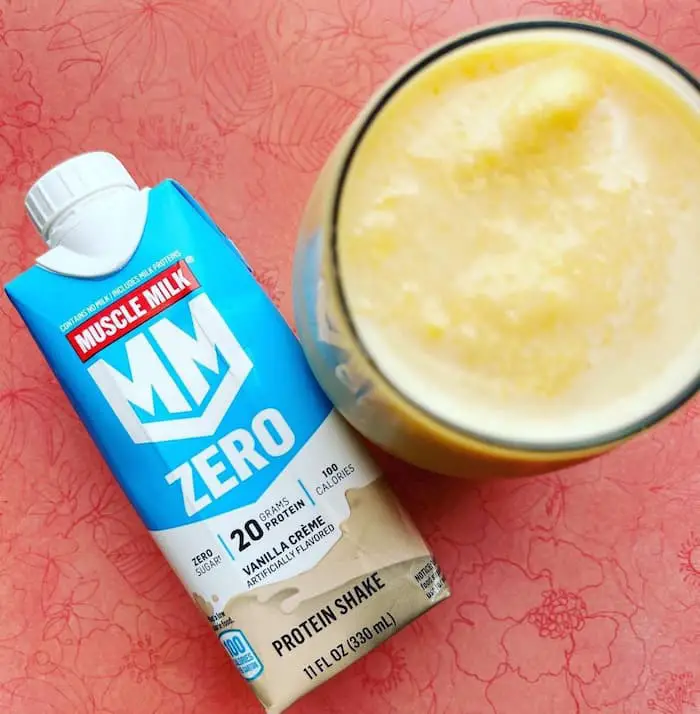
This protein shake has 20 grams of soy-free protein (so it doesn’t leave you with a chalky aftertaste), 2 grams of net carbs, and 100 calories per serving, all for $2.20 per serving, which is around 34% cheaper than Optavia shakes. Alternatively, you can make your DIY homemade Optavia fuelings and smoothies based on whey protein.
2. Create DIY Optavia Fuelings
The biggest advantage of creating DIY Optavia Fuelings from scratch is that you can fully control all the ingredients you add to the shakes. The drawback is that you need to pay attention to portion sizes, which can be time-consuming and require a good understanding of nutritional values. You’ll also need a blender, measuring cups, protein powder, low-glycemic fruits, and other healthy shake ingredients like almond milk or chia seeds. Blending vegetables (or fruits) as smoothies with protein powder is awesome. I love frappe composition with ice (a lot of ice). Here’s a photo of me drinking a DIY Optavia smoothie that has similar nutritional value to Optavia shakes (while being tasty and satisfying).

This shake has 3 oz mango, 1 passion fruit, and 1 serving of whey protein powder. The total of 160 calories. People often make the mistake of adding too much sugar or high-calorie ingredients, defeating the purpose of a meal replacement. Stick to the nutritional guidelines similar to Optavia’s to avoid this. It should take about 10-15 minutes to prepare and blend your shake. Depending on the ingredients you choose, each shake couldn’t cost you more than $2.00.
If shakes are not your thing, you can start looking for other Optavia fueling substitutes and cheaper alternatives such as Greek yogurt, high-protein crisps, beef jerky, cheese crackers, and more.
3. Find cheaper alternatives to Optavia Fuelings
Finding cheaper alternatives to Optavia Fuelings means identifying cost-effective substitutes that still align with the 5&1 plan’s nutritional guidelines. I honestly fell in love with some of the Optavia foods, but I cannot afford to buy them anymore. To continue with this diet, I had to find cheaper alternatives to Optavia fuelings that provide similar nutritional value, but for a lower price. Think cereals, yogurts, or beef jerky.
Instead of spending $3.32 on a 32-gram Optavia pre-packaged snack, you’re looking for budget-friendly options that offer similar amounts of proteins, carbs, and fats. Here’s the photo of a pumpkin Greek low-fat yogurt from the company Two Good.
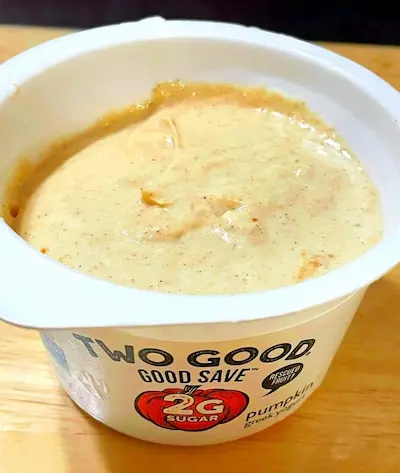
This 5.3 oz yogurt packs 12 grams of protein, 3 grams of carbs, and just 80 calories. A 4-pack costs about $4.16 at Walmart, which breaks down to $1.04 per serving. That’s three times cheaper than any Optavia Essential Fueling.
Many folks make a mistake by looking for cheaper options that lack essential nutrients; make sure to compare the nutritional content carefully. With this yogurt above, choose the plain flavor of this Optavia-approved yogurt for fewer calories (only 2 grams of sugar). You’ll need a grocery list, a calculator for comparing prices, and access to nutritional information (either online or on product labels). Once you’ve stocked up on alternative protein shakes and bars, integrate them into your Optavia meal plan and monitor your progress to ensure they’re effective.
4. Use Optavia bar substitutes
Using Optavia bar substitutes means looking for alternative products to replace the Optavia bars in your diet plan. You can either make your own bars that meet the same nutritional criteria or shop for something more affordable. (No more tiny 1.13 oz Optavia bars.)
I’ve chosen to buy protein bars that have little to no carbs, are packed with proteins, and are less expensive than Fuelings. A good place to start is to search for protein bars that are under $3 per bar. This table displays some examples of substitute snacks you can use when doing Optavia on your own.
| Brand | Cost per bar | Proteins |
|---|---|---|
| Power Crunch Whey Protein Bar | $1.66 | 13 grams |
| Hemp Yeah! Super Seed Bar | $1.67 | 10 grams |
| Proti Fit Protein Bar | $2.12 | 15 grams |
| One Protein Bar | $2.32 | 20 grams |
| Kind Protein Bar | $2.29 | 12 grams |
| No Cow Bar | $2.33 | 21 grams |
| Outright Bar | $2.50 | 15 grams |
Here’s the photo of one of my recent finds – Quest mini protein bars.
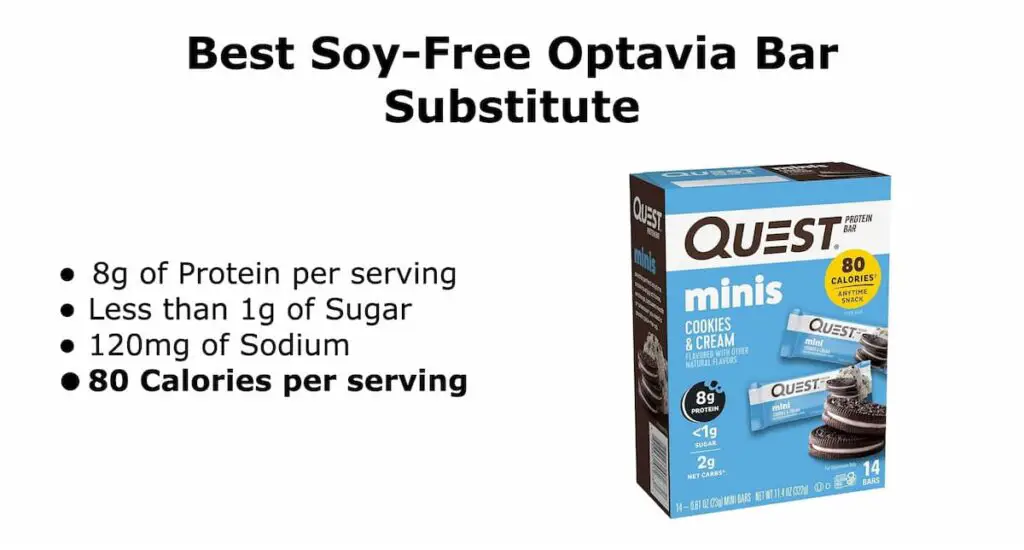
While this bar may have a bit less protein compared to Optavia bars, it’s a winner in other areas. Each serving, priced at just $1.13, is 65% more affordable than Optavia Fuelings, and it’s incredibly satisfying. After enjoying one of these, I feel full for quite some time, a stark contrast to the lingering hunger I experienced with Optavia bars.
If you like to continue living an Optavia lifestyle (without paying high fees), consider looking for bars that are equivalent to Optavia bars (but cheaper). You can also try making DIY Optavia bars but this requires a food scale, measuring cups, a blender, recipes, and ingredients like protein powder, oats, and nuts. Preparation takes 30 minutes to an hour, and remember to store them for later.
5. Make your own Optavia bars
Making your own Optavia bars from scratch involves following a recipe for meal-replacement bars that align with the Optavia diet’s nutritional guidelines. This step is all about crafting homemade bars that are high in protein and fiber but low in sugar and carbs, mimicking the nutritional profile of commercial Optavia bars.
While there are many store-bought Optavia bar alternatives available, I often like to create my own homemade bars. Making your own Optavia bars it’s not rocket science, but you do need to be precise with measurements to get the nutrition right. You’ll need a food processor, measuring cups and spoons, a mixing bowl, a baking sheet, and parchment paper.
It’ll take about 30-45 minutes, including prep and baking time. The ingredients could set you back around $20, but remember, you’ll be making multiple bars. According to a 2021 study by Thais Regina Mezzomo from Centro Universitário Internacional UNINTER, “On average, the homemade meals are less expensive, compared to foods commercially prepared.”
The big mistake when making DIY Optavia bars is that people often use too much sugar or the wrong types of protein. Stick to unsweetened ingredients and high-quality protein powders to stay on track. My wife likes to put nuts, seeds, dried fruits, Super greens powder, syrups, and seasonings, but always within the calorie limits to match small portion sizes.
6. Eat 5 small meals a day
A key aspect of the Optavia diet is eating small meals every 2-3 hours, which can stabilize blood sugar and provide steady energy. However, research on this approach varies. A 1998 Universidad Complutense study found that women eating 4-5 meals daily had lower BMI and LDL cholesterol than those eating 2-3 meals. Yet, the study also noted potential risks for the elderly, including increased LDL cholesterol and obesity. A 2019 study by Antonio Paoli of the University of Padova linked higher meal frequencies to lower disease risk but cautioned against overdoing it with 6 or more meals a day. Ultimately, it’s about finding the right balance for your individual needs and lifestyle.
Eating small and often is all about portion control and timing; you’ll eat five meal replacement snacks throughout the day to keep your metabolism humming and avoid overeating. Here’s what one of my 5 small meals per day on Optavia DIY looks like.
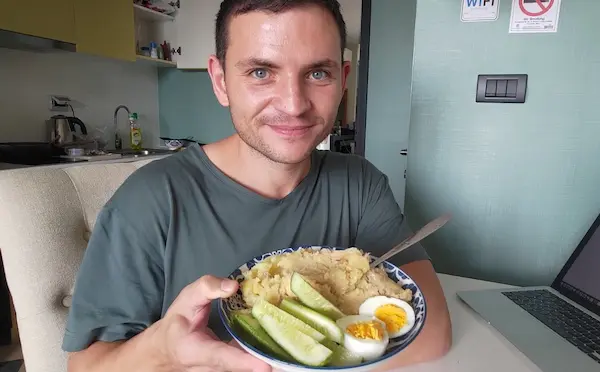
It includes 1 egg, 4 cucumber slices, 2 oz of tuna, and 5 oz of cauliflower mash, totaling 150 calories and 22 grams of protein. All I did was have 5 small fuelings and 1 Lean & Green meal, up to 2 condiments, adding up to 800-1,000 calories a day.
7. Forgo extra condiments
Forgoing extra condiments means avoiding or minimizing the use of additional sauces, salad dressings, or spreads when following the DIY Optavia diet plan. This step aims to reduce unnecessary calories and sugars that often come with condiments, helping you stick to the Optavia plan’s calorie and nutrient guidelines.
Although Optavia offers a detailed condiment list and suggests sticking to 3 servings per day, it’s easy to exceed that limit. People frequently underestimate how condiments can affect their daily calorie count; being mindful and reading labels can help you steer clear of this trap.
No special tools are required, just your regular meals without the added condiments. It takes zero extra time; in fact, you might save a minute or two by skipping the condiment aisle or section. As part of your Optavia DIY plan, you want to be strategic and limit your condiment intake. Here’s a photo of one of my favorite condiments.
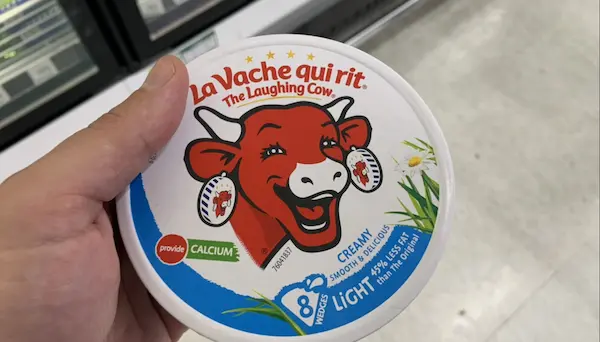
One wedge of The Laughing Cow cream cheese has around 31 calories. If you want to take your meals up a notch without any additional fats or sugars, use herbs and spices. For me, eating a lot of sauces and seasonings was simply adding unnecessary calories to my diet. Unless you’re eating Optavia-approved salad dressings with zero calories, I would stay away from any kinds of ketchup, grated cheeses, and mayonnaise.
8. Join the online community
Joining the online community involves becoming a part of a online group where you can share experiences, and tips, and get support on your Optavia DIY journey. This step is all about connecting with like-minded individuals who are also following the 5&1 plan, so you can learn from each other and stay motivated.
Although regular exercise and careful meal planning were a big part of my weight loss results, the online community I found was unexpectedly helpful. Generally, joining these online communities is free, though some specialized forums may have a small membership fee. It should take about 10-15 minutes to sign up and introduce yourself to the community.
From traditional support groups and forums to even Optavia-specific chats, there was always a friendly face ready to listen and offer advice. Through seemingly never-ending encouragement from old and newfound friends alike, I was unceasingly motivated to stay true to my goals.
To be frank, without the help of the amazing online community, I wouldn’t have achieved my weight loss goals. One biggest mistakes I see is that people often join but don’t participate; make sure to engage in discussions, ask questions, and share your tips to get the most out of the community.
9. Reduce carbohydrates
Reducing carbohydrates means cutting back on foods that are high in carbs to shift your body into fat-burning mode. This step is all about swapping out high-carb foods like bread and pasta for low-carb options like veggies and lean proteins to help your body tap into fat stores for energy.
According to a 2020 study by Shreya Chawla from King’s College London published in the Nutrients Journal, “low-carbohydrate diets help people lose weight better than low-fat diets.” So, If I wanted to DIY my Optavia diet, I knew I had to to low-carb. Here’s a photo of how I choose my carbs.
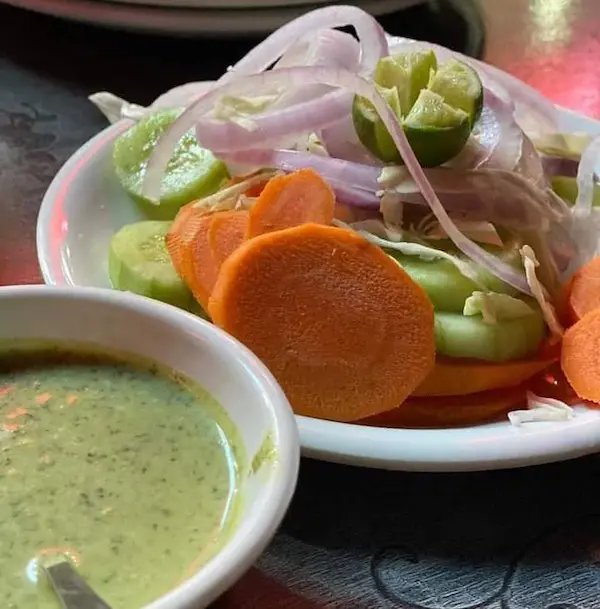
The picture shows broccoli soup (without creamer) and raw carrots, cucumbers, onions, and lime. Everything has less than 100 calories (but is extremely filling). By eating fewer carbs and more protein-rich foods, I immediately noticed a tangible difference in my weight and energy levels.
It takes about 1-2 hours to plan your low-carb meals for the week, depending on your familiarity with low-carb foods and meal planning. Reduce your carb intake to 80 to 100 grams per day. In terms of cost, expect to spend around $30-$60 per person on low-carb groceries for the week, depending on where you shop.
People often mistake “low-carb” for “no-carb” and eliminate all carbs, including healthy ones like fruits and veggies. I still eat my veggies, but I am sure to only choose Optavia-approved vegetables with low to medium carbohydrates and low glycemic index. Stick to a balanced approach by including low-carb veggies and some fruits.
10. Choose lean meats
Choosing lean meats is all about opting for cuts of meat that are lower in fat to keep your calorie intake in check. Lean meats are an important part of the Optavia diet. In each Lean & Green meal, you should have 5 to 7 oz of meat (or meatless options). By choosing lean cuts of meat, you can get all the benefits of a high-protein meal without having to worry about excess calories or carbohydrates.
You’ll need a grocery list, a kitchen scale, and some meal prep containers. This step takes about 30 minutes to an hour, depending on how much you’re prepping. Budget-wise, you’re looking at around $20 to $50, depending on the type and quantity of meat. I rarely choose fancy meats like elk or bison. I often opt-in for chicken breast, pork loin, and ground turkey. They’re easier to find and less expensive.
Difficulty level? I’d say it’s easy-peasy. A common mistake is confusing “lean” with “low-calorie,” so make sure to read labels and maybe even consult a nutrition app. Always remember to cook your meat to the proper internal temperature to avoid foodborne illnesses. After you’ve got your lean meats all prepped, move on to planning your veggies and other protein sources to round out your meals.
11. Do strength training
Exercise is a great tool for staying fit and healthy, but it also has the potential to affect our appetite. Doing strength training while doing Optavia on your own is all about building muscle and boosting your metabolism through weightlifting or resistance exercises. Here’s how my face looks after 60 minutes of a boxing session.

In this class, I burned over 800 calories, but I was hungry all day. After this class, I ate more than usual (way more). On the contrary, here’s a photo of my pull-up session in my local park in Coral Gabels.
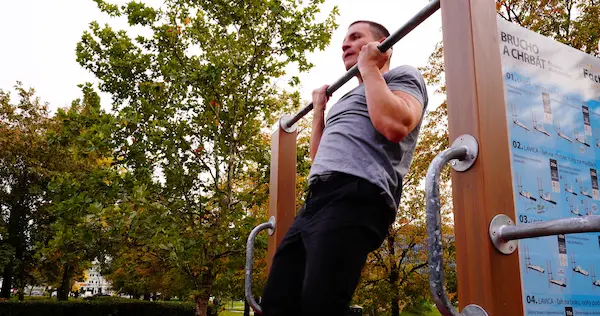
Here I don’t think I’ve burned more than 200 calories, but my appetite stayed stable. My point is that when I exercise hard, my body needs more energy to refuel and rebuild, which very often creates an increase in my appetite.
If the outdoor gym is not your thing, you’ll need some dumbbells, a resistance band, or access to a gym. Time-wise, aim for at least 30 minutes, but no more than an hour. Cost can vary; if you already have equipment or a gym membership, it’s basically free, but starting from scratch might set you back $50 to $100.
Difficulty level? I’d say it’s medium; you don’t have to be a bodybuilder, but it’s not a walk in the park either. A common mistake is lifting too heavy too soon; start with lighter weights and work your way up. Safety first, so make sure to warm up before and cool down after your session. Once you’re done, track your progress and maybe mix in some cardio or flexibility exercises for a well-rounded routine.
What is the Optavia diet?
The Optavia diet is a weight loss program that provides meal replacement products like shakes and bars. The Optavia 5&1 plan involves eating five Optavia Fuelings and one lean and green meal you prepare yourself each day. Each Optavia snack has less than 110 calories is packed with proteins and contains added probiotics. The main meal needs to have 5 to 7 oz of lean meat and 3 servings of low to medium-carb vegetables.
The Optavia diet is designed to put your body into a mild fat-burning state. While the plan is generally considered safe, it’s always best to consult a healthcare provider before starting any new diet on your own, especially if you have pre-existing conditions.
What are the benefits of doing the Optavia diet on your own?
Doing Optavia 5 and 1 on your own offers financial savings, personalized coaching, improved cooking skills, healthier eating, and fewer digestive issues.
- You save money: By ditching Optavia Fuelings for cheaper alternatives, you can save around $250 a month—that’s a cool $3,000 a year.
- You can hire a real coach weight loss coach: Instead of relying on unqualified Optavia coaches, use the money saved to hire a certified weight loss coach for personalized, accountable guidance.
- You learn how to cook: Going DIY on Optavia reignites your love for cooking, offering a fulfilling break from work and a chance to impress your spouse with homemade meals.
- You eat healthier: Swapping processed Optavia products for whole foods not only feels better but is a smarter long-term health choice.
- You stop having stomach problems: Ditching Optavia Fuelings can alleviate digestive issues like gas and diarrhea, making for a more comfortable diet experience.
How to maintain the fat-burn state while doing Optavia on your own?
To maintain the fat-burn state while doing Optavia on your own, stick to a low-carb, high-protein diet and keep your daily caloric intake in check. Incorporate regular exercise, especially strength training, to boost metabolism and ensure you’re burning fat efficiently.

Thank you, Michal 😊 This was just the encouragement and information I had been searching for! I love Optavia, I have had several go’s with it losing about 30 lbs total, regaining 10, however. I dont always have the money, but am afraid of ‘doing things wrong’ when I stop the program. I dont lean on my coach like I should. Very introverted. Your program will stick in my head and help me stay on track!
You’re welcome!
Thank you soo much for posting this! I want to try Optivia however just can’t afford $400+ a month. Looking forward to putting your suggestions to work.
Thank you so much for all of this valuable information. I see many around me having great success with Optavia, but I just cannot afford $400 a month (plus I am a picky eater). Coming across your website has been a blessing, as I can customize it myself to what I like to eat.
Hey, I’m gf df and Ef is this possible for me to do?? I need things spelled out for me on how to do Optavia on my own. I’m horrible about figuring it out myself!! Help🤪
You will find it VERY difficult with the fuelings. The meals will be ok. But you can sub in your own fuelings
Loved the pictures while reading this. I’ve lost over 52 pound on Optavia. I would love to save money (of course) but I’m very unsure on how to use whey protein. I will use other suggestions here for sure. Thank you
Thank you for posting this. I’m going to start Optavia on my own tomorrow!
Thank you for doing this! I have been on Optavia for about 15 months. I lost the weight I was wanting in 6 months and have been maintaining since. I am struggling, however, with getting away from purchasing fuelings for at least 3 of my meals (and as you’ve pointed out…..it’s expensive!) Your information provides a lot of options that are still easy to “grab and go”.
Thank you for this. I’ve lost 40 lbs on Optavia, but have been on it for 2 years and have not lost anymore (my Dr. wants me to lose 20-30 more). I’m I’ve tired of paying through the nose and need to shake up my routine. How do you get a coach outside of Optavia?
I would like to find a private Optavia oriented coach as well!
Michael, how much did you end up losing on your DIY version? Did you feel you were able to maintain your progress on this version?
Thanks! Cathy
Thank you for this. I tried searching for online communities that were not created by “coaches” for my DIY, but could not find a group no matter how I reworded it. Do you have a group that you belong to that you could share? I am trying to put together a complete list of options to replace the fuelings.
Hey Barbara! Yes, we’re creating FB group for people who want to do Optavia DIY